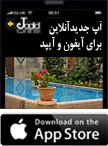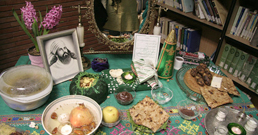The legends of Iran have it that King Jamshid established the tradition of celebrating Norouz, the Persian New Year at the beginning of spring, in the present form as it has come down to us today. However, not many know of the Zoroastrian symbolism ascribed to each item of the Persian New Year traditional table, called Haft Seen. This is set each year on the eve of the vernal equinox, when day and night are equally long.
Zoroastrian tradition would lay out the seven trays on the rooftop before dawn on eve of the new year, the contents of each representing one of seven mystical steps towards God, Ahura Mazda. Families use the New Year to spring clean and to renew ties with relatives.
Dr Ardeshir Khorshidian, a Zoroastrian moobed or priest in Tehran explains these traditions and their meaning for Zoroastrians, shedding light on a little-known aspect of the ancient culture of Iran that has survived to the present day.


